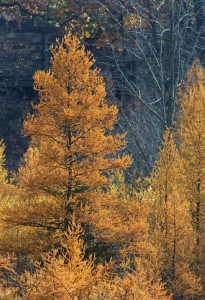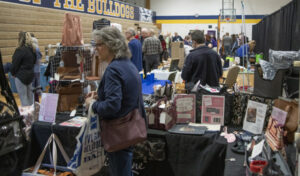
By Jennifer Fairfield
(Publisher’s note: Part One published yesterday.)
Trees and shrubs:
There is still time to get new tree or shrub planting done – but get them in soon. Make sure to water them well all the way up until the ground freezes, so that they have the best chance of making it through the winter.
Did you notice a weird yellowing of the leaves on your maple trees this summer? I had been seeing a number of, especially younger, maples in the Chelsea area (and in my own yard) with an issue called chlorosis.
Unfortunately, I didn’t realize that my tree was affected until well into the season, so my options for dealing with it were a little more limited than had I noticed it earlier. While I wouldn’t necessarily recommend doing much about it now, there are things that you can do about it early in the spring next year, to help prevent the problem recurring.
One thing I would recommend you do now is get a soil test of the soil around your affected trees, so you can have a plan in place for spring.
Lawn:
Grass will continue to grow until we get a killing frost, so keep mowing. If you leave the grass too long over the winter, it is more susceptible to disease.
Mulch the clippings into the lawn to help add nutrients back into the ground, which in turn will help feed the lawn. If you do bag your clippings, add them to your compost pile.
I typically suggest that you mow up the leaves while you are mowing your lawn so that they become mulch for your lawn. While I do still generally recommend that, there is one reason to consider getting rid of them entirely.
If the leaves on your trees are showing signs of disease, like some of mine are, you can help to reduce the chances of your trees having problems again next year by raking up and burning the leaves or otherwise removing them from the property.
Infected leaves left on the ground, even if chopped up, give disease a host over the winter, which means the disease will be around again next year to infect your trees again. Whatever you do, don’t leave the leaves whole on your lawn through the winter, as that can lead to a fungal disease in your lawn called snow mold.
Tools:
Keep hoses handy this month, in case we don’t get a lot of rain. Keep watering your perennials, trees, and shrubs up until the ground freezes, as a lack of water causes stress to the plants, making it harder for them to make it through the winter.
This is especially true of anything newly planted. Do be careful that you aren’t leaving hoses outside with water in them when we start getting freezing temps though, as this can cause them to split open when the water freezes.
After you’ve cleaned out your gardens and finished your mowing and watering, don’t forget to clean your tools before putting them away for the winter. Doing so will help them last longer, and make them work better for you.
Fine Gardening recommends cleaning and sharpening them regularly, throughout the season. If you are only going to do it once though, the best time is at the end of the season, so they don’t spend the entire winter covered in sap and soil, which can promote rust.
Birds:
Be sure to keep your feeders cleaned out. Birds don’t like moldy food any more than we do. Dirty feeders can also spread disease among birds.
Keep your hummingbird feeders full and out for a little longer yet (bring them in at night if we are expecting freezing temperatures). I’ve recently seen hummers at my feeders, so am definitely leaving them out for a while yet.
Also keep filling up birdbaths to help provide a source of water for the birds. When we get to a point of freezing temps at night (which we will, I’m sorry to say), empty your birdbaths before nightfall, and fill them up again in the morning, for as long as daytime temps stay above freezing – or consider putting a de-icer in so you can provide the birds with fresh water all winter long.













